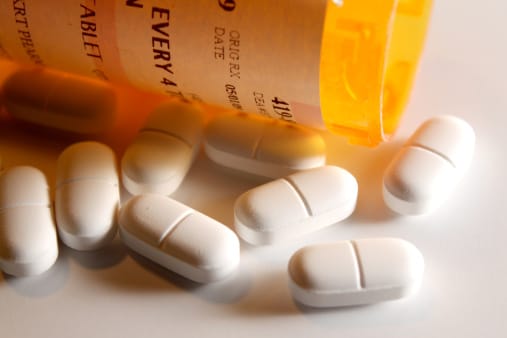Known as meth, ice, blue ice or glass, crystal methamphetamine resembles shiny blue-white “rocks” or fragments of glass of various sizes. Meth is an odorless, blue or colorless form of d-methamphetamine, a synthetic psychostimulant. It is also the most frequently used type of a class of drugs called amphetamine-type stimulants (ATS) and the second most abused illicit drug in the world after cannabis. Recreational use of meth has increased significantly since the 1990s. In 2016, about 667,000 people aged 12 and older were current users of meth, the majority of which were 26 and older. Crystal meth is most commonly smoked in glass pipes, but it can also be snorted, injected, swallowed or taken rectally.
Illegal Meth Labs
Initially, illegal meth was manufactured using phenyl-2-propanone (P2P) and methylamine, until they became Schedule II drugs in 1980. Since then, crystal meth has been made in illegal labs with toxic substances like battery acid and over-the-counter drugs (OTC) containing the decongestant pseudoephedrine, prescription stimulant ephedrine or phenylpropanolamine. As many as 32 chemicals are involved in the process and nearly six pounds of toxic materials are required to create one pound of meth. The Combat Methamphetamine Epidemic Act of 2005 placed a control on the OTC drugs used to make meth, resulting in a huge decrease in U.S. labs. Today, most meth smuggled into the U.S. is made in “superlabs” in Mexico, while small meth labs are primarily in operation to satisfy the meth habits of cookers themselves.
Meth Addiction and Side Effects
Meth is highly addictive because it triggers the brain’s “feel-good” chemicals dopamine and serotonin. Although it produces some of the same side effects as cocaine, a single dose of meth sustains these effects for many hours. At low or moderate doses, there are a number of short-term behavioral side effects of meth:
- Euphoria
- Positive mood
- Arousal
- Behavioral disinhibition
- Improved thinking
- Reduced anxiety
Physical and Functional Side Effects
- Abnormally rapid heart rate
- Elevated blood pressure
- Increased body temperature
- Decreased appetite
- Reduced fatigue
- Change in sleeping patterns
- Dilated pupils
- Sensation of bugs crawling on skin (meth bugs)
- Skin sores (from obsessive picking)
- Poor dental health, known as meth mouth (e.g. gum disease, decay and loss of teeth)
- Stroke
- Coma
Long-Term Behavioral Side Effects
- Hallucinations affecting at least one of the five senses
- Delusional (e.g. unrealistic) thought patterns or full-blown paranoia
- Unusually disjointed or disconnected non-deluded thoughts
- Severe mood swings
- Aggressive or violent behavior
- Suicidal thoughts
Signs of Meth Withdrawal
Physiological dependence, associated withdrawal-related symptoms and craving are thought to reinforce continued use of meth. The severity of meth withdrawal appears to be related to the frequency of use. The acute phase of withdrawal generally lasts as long as 7-10 days. It is common for meth withdrawal to resolve on its own within 14 days of abstinence. A 2010 study on 56 meth-dependent participants uncovered a wide range of withdrawal symptoms, most of which were mild or tolerable. Red itchy eyes was the most common physical symptom (31%), while craving (68%) and frequent thoughts about taking meth (72%) were the most common emotional side effects. Other symptoms impacting at least 25% of participants included:
- Headaches
- Muscle or joint pain
- Increased appetite
- Poor memory
- Fatigue or low energy
- Anxiety/nervousness
- Depression
- Lack of motivation
- Loss of interest or pleasure
- Restlessness
Co-Occurring Anxiety
Anxiety is one of the most common co-occurring conditions in meth users. Several studies found 76% of subjects reported anxiety symptoms after the onset of any amphetamine use and 39% reported a history of anxiety disorders. A Chinese study on 201 participants found 34.3% experienced anxiety during the acute stage of meth withdrawal, including 20.0% with mild anxiety, 11.9% with moderate anxiety and 2.4% with severe anxiety. Gender (being female), frequency of drug use and a history of polydrug abuse were strong risk factors for withdrawal-related anxiety. Protracted withdrawal may last for up to three weeks, posing a serious barrier to sustained recovery. Medically supervised detox helps ensure proper management of symptoms and may help prevent early relapse.






